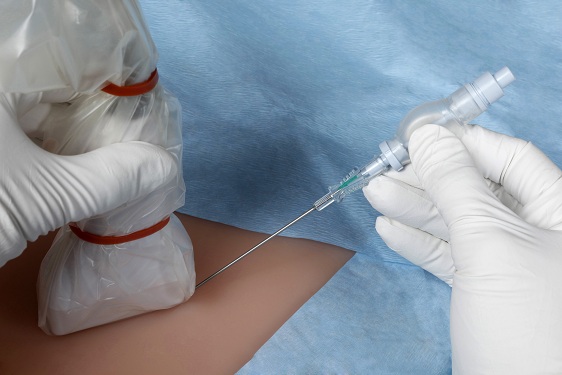ABE or Accidental Blood Exposure
Accidental blood exposure (ABE) is defined as any contact with blood or a biological fluid containing blood involving a breach to the skin (needlestick or cut) or sprayed on to a mucosal membrane (eye, mouth) or onto broken skin.
Huber needle
Specific needles intended for injection into implantable infusion ports. These have a tangential cutting edge in order not to damage the silicone membrane (septum) of the implantable port.
Safe Huber needle
Huber needle avoiding the risk of accidental needle stick injury to care staff when the needle is withdrawn from the implantable port (risk from the rebound effect).

Implantable port
An implantable administration system connected to the vein intended for transfusions, taking blood samples and infusing injectable medicines. It is placed directly beneath the skin usually in a discrete and easily accessible place (at chest or, less commonly, abdominal level). Medicines then pass directly into the blood circulation after simply puncturing the site through the skin.
Chemotherapy
Administration of an anti-mitotic substance to cure or delay the progression of cancer.
Adjuvant chemotherapy
Complementary chemotherapy after initial surgery or radiotherapy.
Neoadjuvant chemotherapy
Treatment of tumour by chemotherapy prior to surgery
Metastases
The development of one or more secondary sites of cancer cells, infectious or parasitic agents, after a primary site in places other than the primary site.
Clot obstruction of a catheter
Obstruction of a catheter due to a clot of blood
Ultrasound-guided venepuncture
Venepuncture visualising the tip of the needle in real time under ultrasound

Positive pressure (when a Huber needle is withdrawn)
Removing the Huber needle from the implantable port and at the same time injecting physiological saline simultaneously through the needle. This compensates for the blood reflux at the distal end of the catheter caused by removing the needle (a ventouse effect from raising the septum and the needle dead space) and therefore preventing the risk of clot obstruction of the catheter.
Lexicon - Oncology


